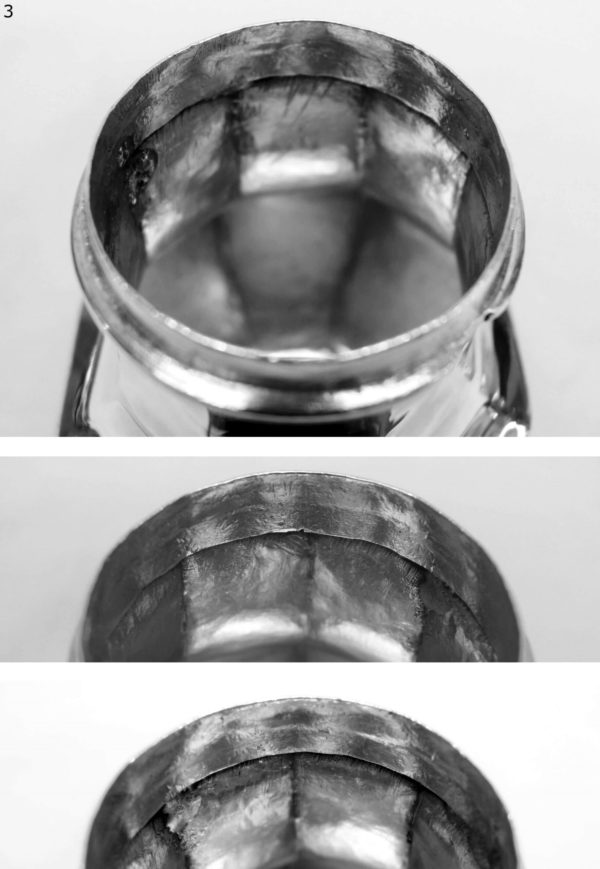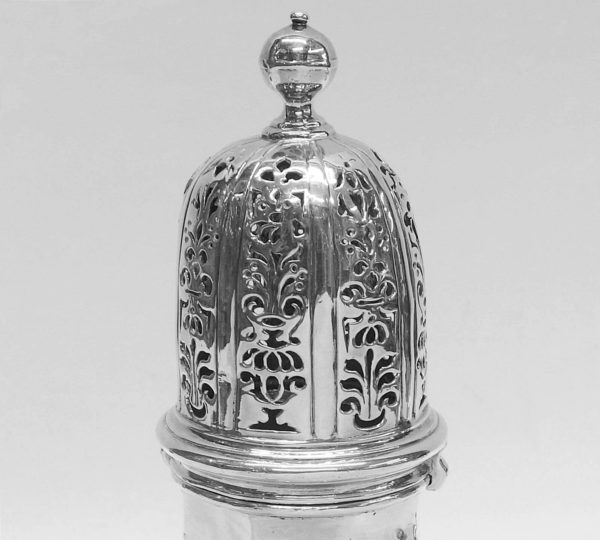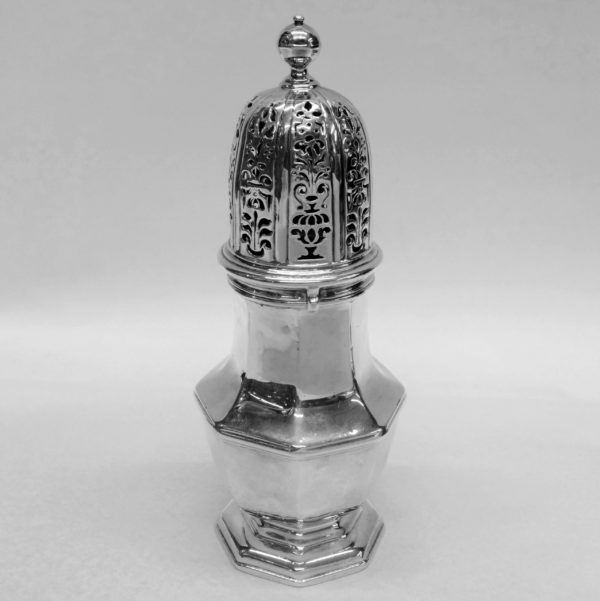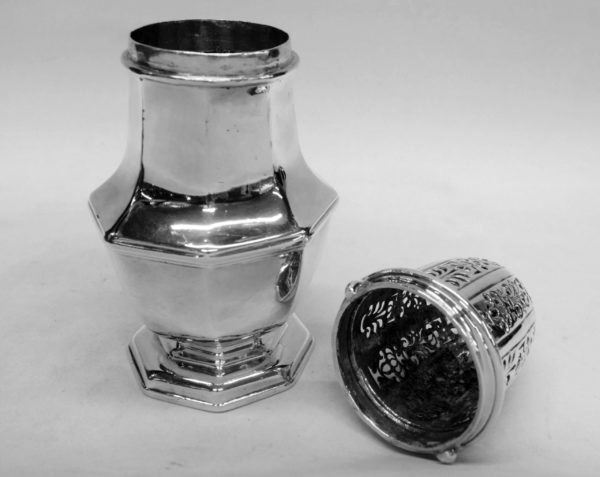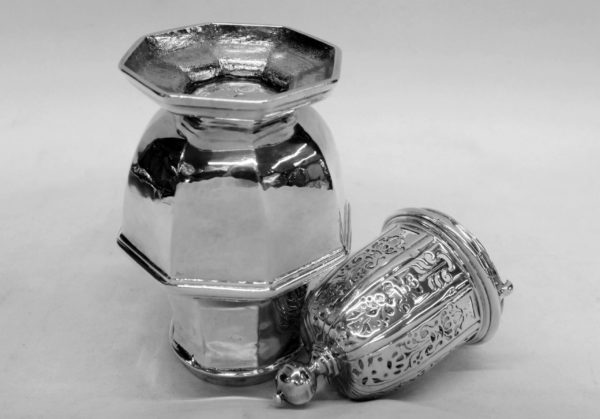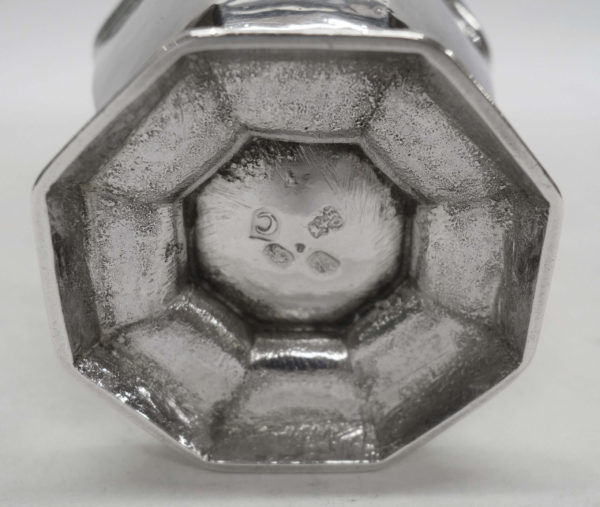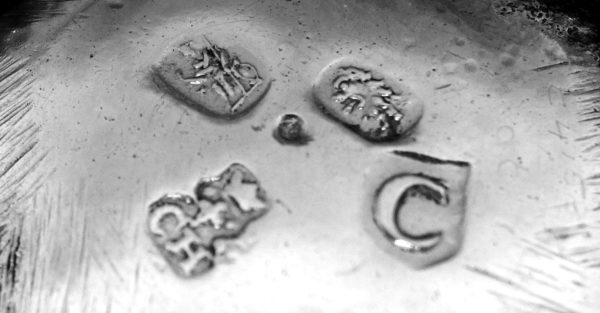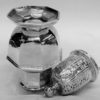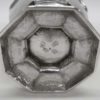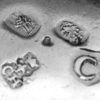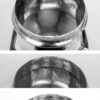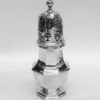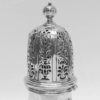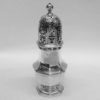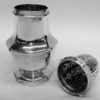George I Octagonal Silver Caster
SOLD
Stock: 9291
Date: 1718
Maker: John Chartier
Country: England
Goliath size. This is a large and very heavy antique silver castor or muffineer in the desirable octagonal shape. Britannia...
Description
Condition
This fine antique castor is in good used condition. The body is stamped underneath with a full set of English silver hallmarks, top unmarked as is often the case at that date. Signs of old repairs inside the top of the body. Please note that this item is not new and will show moderate signs of wear commensurate with age. Reflections in the photograph may detract from the true representation of this item.
Maker Information
Maker: John Chartier
John (Jean) Chartier, son of a Huguenot refugee from Blois. This important silversmith was naturalised in 1697, made a freeman of the Goldsmiths Company in 1698, and entered 2 marks as a largeworker between 1698 and 1699. His son Daniel was apprenticed to him in 1720 and his daughter married Peze Pilleau.
Our Guarantee
Customer satisfaction is our primary concern
All silverware on our website is checked thoroughly prior to offering it for sale and every product listing contains a condition report and details of the silver hallmarks.
All items offered on our website include:
- Free Shipping Worldwide
- Tracked and Insured
- 14 day no quibble money back guarantee
- We are accredited members of LAPADA and conform to their strict professional standards
- We dispatch 1-3 days after receiving cleared payments
More detailed information about deliveries, returns and how to pay is available in the Help section at the bottom of this page.
